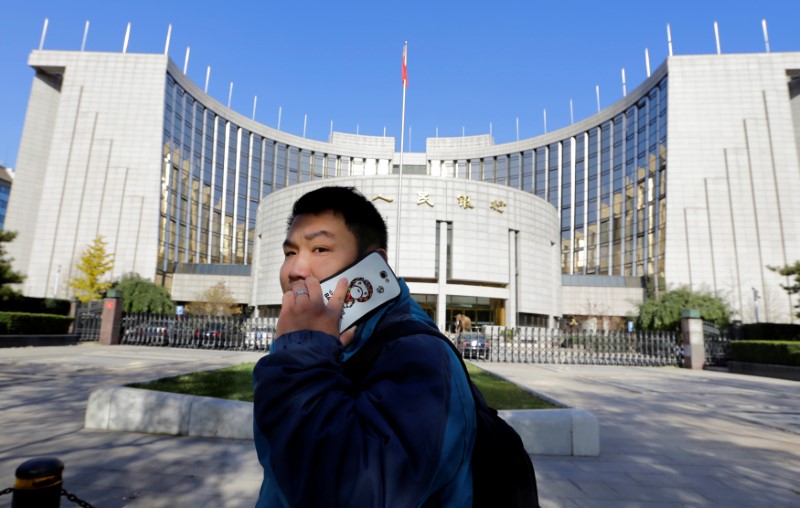SHANGHAI (Reuters) - China cut its benchmark lending rate as expected on Monday to reduce borrowing costs for companies and prop up the coronavirus-hit economy, after it contracted for the first time in decades.
The one-year loan prime rate (LPR) was lowered by 20 basis points (bps) to 3.85% from 4.05% previously, while the five-year LPR was cut by 10 bps to 4.65% from 4.75%.
The move was the second cut to the lending benchmark rate this year, and the latest reduction in one of China's key lending rates. Most new and outstanding loans are based on the LPR, while the five-year rate influences the pricing of mortgages.
All 52 participants in a Reuters survey had expected a reduction in the LPR at its monthly fixing. Most had forecast a 20 bps cut in the one-year rate but a more modest 5-10 bps in the five-year as Beijing tries to keep a lid on property prices.
Data on Friday showed the Chinese economy shrank 6.8% in the first quarter from a year earlier as the virus and tough containment measures shut down factories and shops and put millions out of work. That was the first contraction since at least 1992, when quarterly records were first published.
While the country is restarting its economic engines, analysts say activity could take months to return to pre-crisis levels, with the likelihood of a global recession adding to the pressure.
The LPR is a lending reference rate set monthly by 18 banks. The People's Bank of China revamped the mechanism to price LPR in August 2019, loosely pegging it to the medium-term lending facility rate (MLF)
